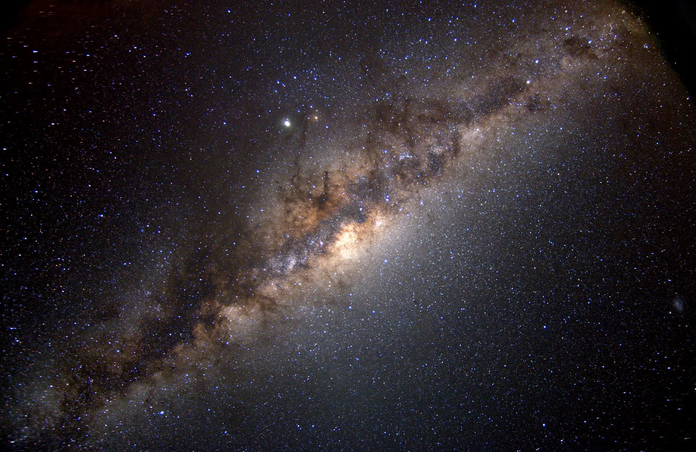MIT team discover three of the oldest stars in the universe

Researchers at MIT have discovered three of the oldest stars in the universe, located in our galactic backyard. The stars, denoted small accreted stellar system (SASS) stars are believed to have each belonged to its own small galaxy that was absorbed by the growing milky way later on.
The group observed the stars in the milky ways halo, a cloud of stars that cover the entire main galactic disk. It was uncovered that the stars formed between 12-13 billion years ago, at a time when the first galaxies were being birthed. These stars are the only remnants of the galaxies they originated from, and since they sit on the outskirts of the milky way, the team suspect that there could be more survivors.
"These oldest stars should definitely be there, given what we know of galaxy formation," says MIT professor of physics Anna Frebel. "They are part of our cosmic family tree. And we now have a new way to find them."
Researchers hope to use these SASS stars as analogs of ultrafaint dwarf galaxies, thought to be some of universes first surviving galaxies. Although these galaxies still survive today, they are too distant and faint for astronomers to study properly. However, SASS stars could have have once been a part of a similar early dwarf galaxy, so can be used as a more accessible tool to understand the evolution of ultrafaint dwarf galaxies.
The discoveries came from a teaching idea, where Frebel began teaching a new course during the 2022 fall semester, entitled ‘Observational Stellar Archaeology’ whereby students learned techniques to analyse ancient stars and applied this to stars that had never been studied before to determine the origin. The students used data collected by Frebel from the 6.5m Magellan-Clay telescope at the Las Campanas Observatory. Particularly old stars that had formed soon after the big bang were focused on- at this time the universe mostly consisted of hydrogen and helium along with low abundances of other elements such as strontium and barium.
Students looked for stars with spectra that indicated such low abundances, narrowing down the search to 3 stars observed with the Magellan telescope between 2013 and 2014. There were no follow up observations on these stars, making them perfect for the students to characterise themselves. The stellar chemical compositions were determined using various stellar models, with the intensity of a feature in the spectrum corresponding to an abundance of a particular element. Following their analysis, it was found that the stars possess low abundances of strontium, barium in addition to iron compared to a reference star of the sun. One of the stars had less than 1/10,000 the amount of iron to helium compared to the current sun.
The team checked the orbital patterns of the stars and how they move across the sky. The stars are in different locations in the milky ways halo, estimated to be 30,000 light years away. As each stars motion about the galactic centre was followed using observations from Gaia, the team noticed something odd – all three stars seemed to be moving in the opposite direction to other stars in the main disk. Known as retrograde motion, this is a well-known hint that an object was once accreted or ejected from elsewhere.
This peculiar motion along with low abundance measurements builds a strong case of the stars belonging to older, smaller dwarf galaxies that fell into the milky way at random angles. Upon further inspection, 65 other stars were found with a similar retrograde motion, all of which had low strontium and barium abundances.
"Interestingly they're all quite fast—hundreds of kilometers per second, going the wrong way," Frebel says. "They're on the run! We don't know why that's the case, but it was the piece to the puzzle that we needed, and that I didn't quite anticipate when we started."
The group is aiming to search for other ancient SASS stars using these two factors, anticipating to find a small but significant number of the oldest stars in the universe.
"It's been awesome to work with three women undergrads. That's a first for me," she says. "It's really an example of the MIT way. We do. And whoever says, 'I want to participate,' they can do that, and good things happen."
--
Cover image: NASA
Journal source: Hillary Diane Andales et al. 2024. The oldest stars with low neutron-capture element abundances and origins in ancient dwarf galaxies. MNRAS 530 (4): 4712-4729; doi: 10.1093/mnras/stae670
